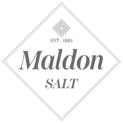WHATEVER
Stop typing. Put your pen down. Take a deep breath. It’s time to stop and really think about your content strategy. Or rather, it’s time to think a little deeper about who you’re writing for. Are you writing meaningful, engaging content that’s designed to be of value to readers? Or are you trying to appease capricious algorithms by shuffling around to that enigmatic dance we call SEO?
It’s all too easy to get wrapped up in the minutiae of long-tail keywords, alt-tags and high-DA backlinks in a bid to appease our search engine overlords. Indeed, writing blog posts can feel like making sacrifices to a fickle deity. You think you’re probably doing the right thing, but there’s a chance you’re simply wasting your time and resources.
The irony is that while brands are scrambling to make themselves attractive to search engines, tech giants like Google are working tirelessly to make their search engines more effective for the people who really matter– their users. New developments like Google’s ‘helpful content update’ have made it more important than ever to implement a people-first approach to content marketing.

A search engine’s job is to direct users to the most relevant, helpful and effective content to answer their queries. However, in an attempt to pre-empt the actions of search engine crawlers (the algorithms that scour the internet for content that’s relevant to a user’s search query), content creators can lose sight of what’s really important.
Google’s helpful content update is an attempt to unite both the search engine and creators in putting people first.
Google has begun using new site-wide signals to rank content to ensure that useful, authoritative resources get to feature more prominently in search engine queries. No longer do you need to lag behind other creators simply because they produce vast quantities of content. Indeed, if a website is deemed to be packed with filler, Google is more likely to disregard it.
In other words, it’s time to stop obsessing over keyword density or ‘link juice’, and focus instead on creating content that is helpful, useful and relevant to your audience.
New technological innovations like Google’s helpful content update may seem like a paradigm shift. But while it seems like everything has changed, the reality is that nothing has changed. Brands still need to keep creating useful, relevant content that is designed to engage, educate and entertain their target audience. Best practice is still best practice.
Over the years, an entire market has arisen around SEO, and like any market it has its shadier alleyways. Black hat SEO practices and spurious ‘get ranked quick’ schemes have given rise to the belief that SEO is a system that needs to be gamed, beaten and outfoxed.
A people-first content marketing strategy ensures that you’ll improve your rankings the right way by producing helpful content.
But how do you know if your content is genuinely helpful to readers?
If you’ve fallen into bad SEO habits, you may feel self-conscious about the quality, quantity and relevance of your content. In accordance with Google’s SEO guidelines, we’ve compiled a checklist of things to keep in mind while writing, to ensure that you’re putting the reader first:
Keep the above in mind when writing, and SEO should take care of itself.
After writing a blog post or landing page, does it feel like you’ve not been ‘SEO-ing’ enough? Don’t worry. That’s actually a good thing. In terms of SEO, writing useful, compelling and relevant copy is its own reward. It’s easy to fall into the trap of feeling like you should be ‘doing’ SEO, but don’t let this misconception lead you into bad habits.
As your fingers dance across the keyboard, try and be aware of practices that can do you far more harm than good:
Fall into these habits, and the vast majority of users will likely click away from your content in a matter of seconds. That could be a serious red flag for search engine crawlers.

One of the biggest problems with writing content for algorithms rather than people is that it invariably results in stale, generic and lifeless copy. Sure, you might be packing in a lot of keywords, but is the end result something that your audience actually want to read? Probably not.
That’s not the kind of content that you want to associate with your brand, and it’s certainly not the kind of content that gives you an edge over your competitors on SERPs. Your content should be as unique, authoritative and brimming with character as you want your brand to be.
You want to write the kind of content that your competitors could never emulate. How do you do this? We have some suggestions:

Businesses create content not just to scratch a creative itch (although that is a pleasant side effect), but to generate value for their audience. They want to give prospective customers or clients something for nothing, and create the beginnings of a positive relationship with their brands.
Unfortunately, when content is created on an erratic or ad hoc basis, it’s an activity that can all too easily fall by the wayside. Especially if you don’t have an internal team that dedicates its time and resources to generating content.
Writing exclusively when you’re struck by a flash of inspiration can result in some great copy, but it can also lead to a very erratic schedule. Audiences want to know that they’ll receive content regularly, otherwise they’ll be unlikely to subscribe to notifications or check in on your website regularly. And that won’t do your SEO any favours.
A comprehensive content marketing strategy, however, can ensure that you are consistently creating content with a strong focus that delivers value for your target audience. It can address a wide range of issues and pain points, positioning your brand as the solution to tangible and familiar problems. It can position you as an authoritative source with a library of high-quality content.
Which is a great way to get into Google’s good books.
If you need a hand creating a content marketing strategy that puts the audience first, we’re here to help. With a talented pool of writers and a whole lot of passion, we strive to help brands make that all-important first impression on their target audiences with a great range of copywriting services.
Want to know more?
Get in touch with our team today.











